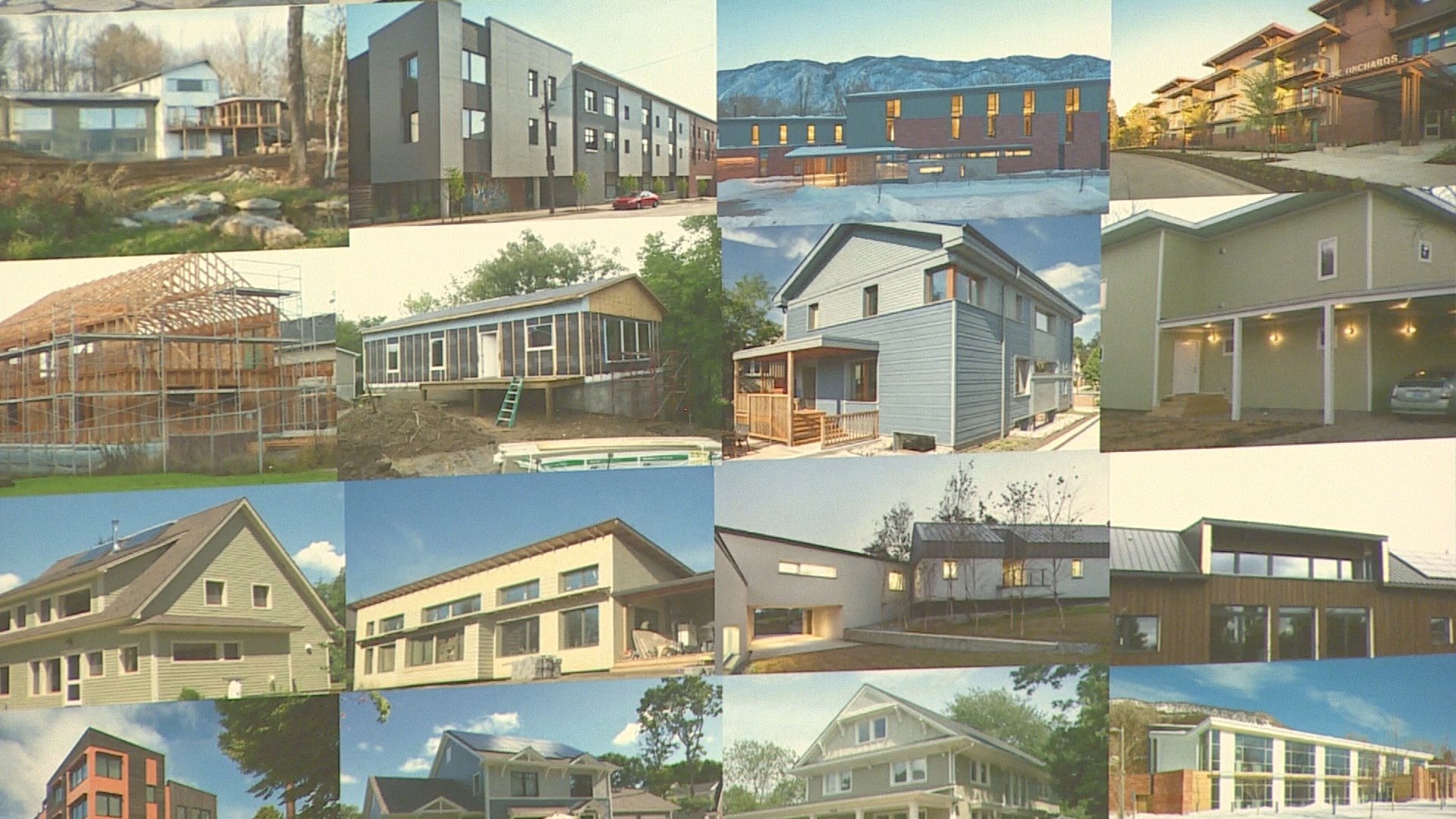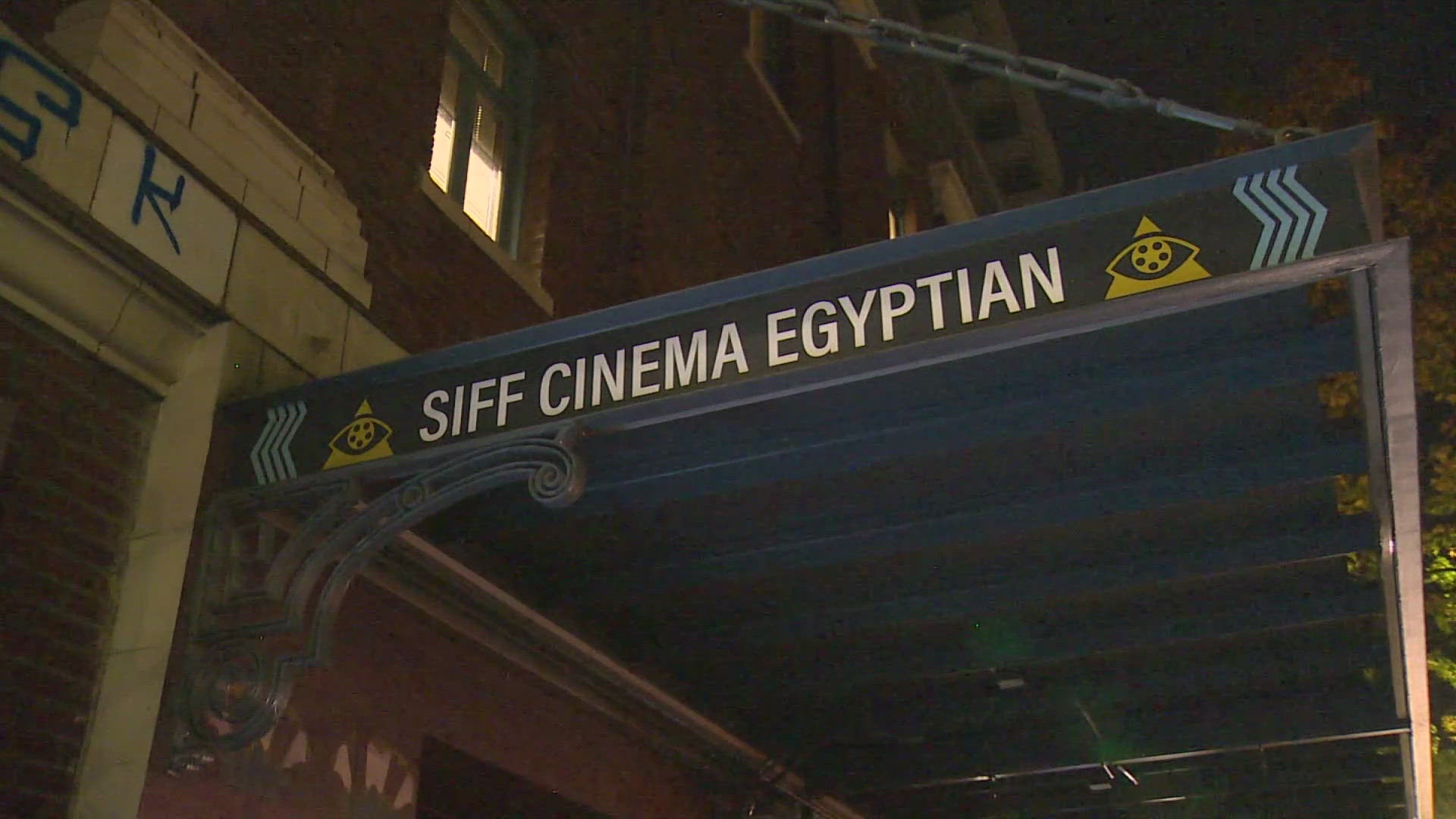Many of us felt the heat this summer. Here in the Northwest many of us don't have air-conditioned homes. And then there's the rainy season just around the corner, with a cold, wet winter forecasted as well. How's your insulation? Your windows? Saving up for those heating bills?
But what if you didn't have to? That's where passive housing comes in.
"Think of the passive house as the Tesla of buildings. It's basically carbon-free," said Tim Weyand, president of Passive House Northwest. "This is a movement, not just a conference."
Three weeks ago, Weyand's firm, NK Architects, set up an experiment in downtown Seattle.
They placed two small structures in Pioneer Square, one that meets the minimum building code for insulation while the other meets Passive House standards. Each was filled with a 1,200-pound block of ice. The plan was to check on each house in several days and see whether there was a difference in how much ice melted. On Thursday, the company presented the results. The Passive House had almost four times the amount of ice left than the house that met the minimum building code for insulation. The experiment was meant to illustrate the amount of energy you could save on your heating bill.
"Down to like only 10-percent of what buildings would use for heating and cooling," said Weyand.
Now in its 12th year, the Passive House Northwest Conference is back in Seattle and building on past success. It's trying to gain more traction in an industry that doesn't always embrace change.
"We're so used to doing things the way we've done it, if there are no impending disaster type problems with how we're doing things, it's really difficult to get people to change," said Walter Grondzik, president of the National Passive House Institute.
Part of the problem is getting builders to follow through with the strict codes necessitated by the science behind passive building. That is everything from considerations of heat flow, air flow, water flow to insulation, which would entail sealing windows and doors in order to create an airtight home.
"For buildings, we're talking about heat flow and air flow and water flow and that's based on the second law of thermal dynamics," said Allison Bailes. He's a building science consultant with a physics background, and passive housing is science. For Bailes, it comes down to one basic goal.
"Make the house as efficient as possible, so you minimize the amount of heating and cooling," he said.
Mostly that's done by lots of insulation, both inside and out, sealing windows and doors, creating an airtight home.
"The folks who are doing the waterproof and air barrier on the outside of the building and the roof. Those are the people who need to be trained to do it differently," added Weyand.
It comes with an added cost, but not as much as you might think. As the industry becomes more standardized and trained in passive building, they estimate it would only add a 3 to 5 percent cost increase to a new home.
"For an additional 5 percent, with the addition of increased comfort, better reliability in power outages, better survivability under extreme conditions, and a reduced monthly energy bill. Where's the hard sell?" said Grondzik.
Even though we don't typically have the drastic climate swing in Western Washington, it's a pretty easy sell here because of what he calls the cultural atmosphere of acceptance. Weyand agrees.
"It's catching on here because we tend to be a green, motivated city. It's more political here. In other parts of the country, it's more pocketbook oriented," he said.
The hope is this philosophy will not just be considered green, but the gold standard for building.


